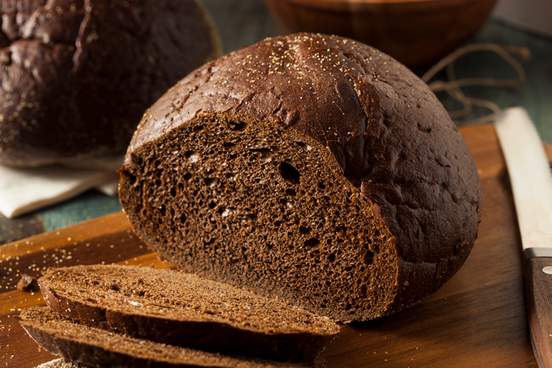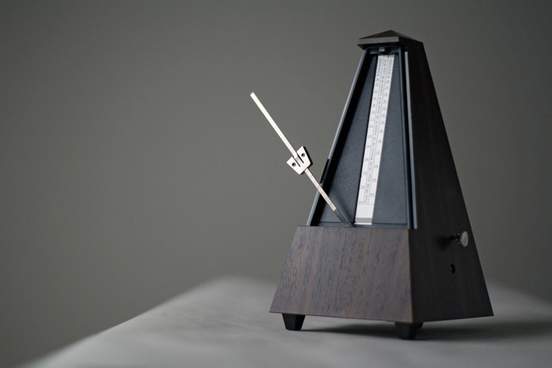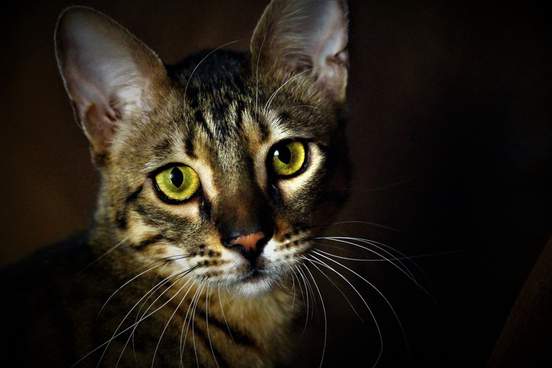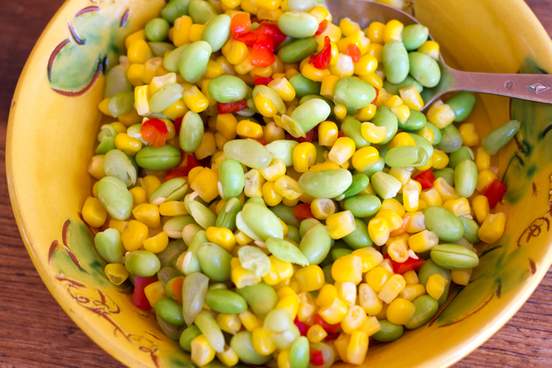
Introduction
“What’s an underrated word you think deserves more love?” We put this following question to social media, and you responded! While there were too many great responses to cover all of them, here are twelve lexical delights deemed unsung by you, faithful browsers, scrollers, readers, and word lovers.

Crepuscular
Definition: of, relating to, or resembling twilight
The early Romans had two words for the twilight. Crepusculum was favored by Roman writers for the half-light of evening, just after the sun sets; diluculum was reserved for morning twilight, just before the sun rises—it is related to lucidus, meaning "bright." We didn't embrace either of these Latin nouns as substitutes for our word twilight, but we did form the adjective crepuscular in the 17th century. The word’s zoological sense, relating to animals that are most active at twilight, developed in the 19th century.
He was in need of rest and decided he would nap so that he could venture out later, smell and see the living city and walk through its arms for the first time in the cool, crepuscular evening before full dark, just as the sun set.
— Vernon Wilson, Callaloo, Fall 2002

Soliloquy
Definition: a poem, discourse, or utterance of a character in a drama that has the form of a monologue or gives the illusion of being a series of unspoken reflections
Soliloquy and monologue cover very similar ground, but there are some important differences between the two words. At its most basic level, soliloquy—from the Latin solus (“alone”) and loqui (“to speak”)—refers to the act of talking to oneself, and more specifically denotes the solo utterance of an actor in a drama. It tends to be used of formal or literary expressions, such as Hamlet’s soliloquies. Monologue (from Greek monos "alone" and legein "to speak") may also refer to a dramatic scene in which an actor soliloquizes, but it has other meanings as well. To a stand-up comedian, monologue denotes a comic routine. To a bored listener, it signifies a long speech uttered by someone who has too much to say.
I took the pistols, scarcely knowing what I did, or believing what I heard, while Dupin went on, very much as if in a soliloquy. I have already spoken of his abstract manner at such times. His discourse was addressed to myself; but his voice, although by no means loud, had that intonation which is commonly employed in speaking to some one at a great distance. His eyes, vacant in expression, regarded only the wall.
— Edgar Allen Poe, Tales of Mystery and Imagination, 1839

Quidnunc
Definition: a person who seeks to know all the latest news or gossip
Tom Jones: famous Welshman, famous crooner, famous quidnunc? “What’s new?” is a question every busybody wants answered, whether by pussycats or no. Latin-speaking Nosey Parkers might have used some version of the expression “quid nunc,” literally “what now,” to ask the same question. Appropriately, the earliest documented English use of quidnunc to refer to a gossiper appeared in 1709 in Sir Richard Steele’s famous periodical, The Tatler. Steele is far from the only writer to ply quidnunc in his prose, however. You also can find the word among the pages of works by such writers as Washington Irving and Nathaniel Hawthorne. But don’t think the term is old news—it sees some use in current publications, too.
It was eleven-thirty on a Sunday morning in March—the Mass hour, Balenciaga’s traditional slot on the Paris Fashion Week calendar—and editors, buyers, clients, and the odd quidnunc had gathered at the Carrousel du Louvre, a cavernous mall under the museum, to attend the presentation of the house’s Fall 2023 collection.
— Lauren Collins, The New Yorker, 27 Mar. 2023

Pumpernickel
Definition: a dark coarse sourdough bread made of unbolted rye flour
Look, we’re just gonna cut the cheese to the chase: Pumpernickel comes from the German words pumpern (“to break wind”) and Nickel (“goblin”), apparently due to the bread’s indigestibility. Do what you will with this information.
The affair was cocktails-and-buffet featuring beef tartare on pumpernickel rounds and a bowl of icy seviche—this was thirty years ago, before such delicacies had been declared lethal.
— Edith Pearlman, The Antioch Review, Fall 2016

Tessellation
Definition: a surface decoration made by inlaying small pieces of variously colored material to form pictures or patterns (in other words, a mosaic or something resembling a mosaic)
The oldest tesserae were small pieces of marble and limestone cut in cubical or other regular shapes for mosaic work. Tessera comes from the Latin tessera (same spelling and meaning) and probably ultimately from the Greek word tessares meaning “four” (as it happens, tessares is also related to the English word four). Latin tilers (and admirers thereof) also used tessella as a diminutive of tessera, and it’s this word that led eventually to the verb tessellate (“to form into or adorn with mosaic”) and noun tessellation. For more fun tessellation facts, make sure to celebration World Tessellation Day, which is observed every year on the seventeenth of June.
A tall woman, whom it was a crime against humanity to force to wait in line, nevertheless swayed with patience nearby within a curious silk kimono, its surface several intersecting globes and saddles of icebreakers and penguins in a tessellation that never necessarily ended.
— Ankur Razdan, Pennsylvania Literary Journal, Fall 2020

Cadence
Definition: a rhythmic sequence or flow of sounds in language
A cadence is a rhythm, or a flow of words or music, in a sequence that is regular (or steady as it were). But lest we be mistaken, cadence also lends its meaning to the sounds of Mother Nature (such as birdsong) to be sure. Cadence comes from Middle English borrowed from Medieval Latin’s own cadentia, a lovely word that means “rhythm in verse.” (You may also recognize a cadence cousin, sweet cadenza, as a word that is familiar in the opera universe.) And from there our cadence traces just a little further backward to the Latin verb cadere “to sound rhythmically, to fall.” Praise the rising and the falling of the lilting in our language, whether singing songs or rhyming or opining on it all.
I was mesmerized by his voice. His cadence was slow, with thought given to each word. His diction was perfect, every consonant treated equally, every comma and period honored—eloquence that came only from years of practice.
— Dalia Elmanzalawy, 580 Split, Spring 2021

Lanceolate
Definition: shaped like a lance head, specifically : tapering to a point at the apex and sometimes at the base
The Twitter user who identified lanceolate as a favorite underrated word also gave shout-outs to cordate (“heart-shaped”) and pinnate (“feather-shaped”) as worthy of praise. We agree! Botany is full of evocative words describing the shapes of leaves, which you can get a handy glance at in this illustration and key. Lanceolate isn’t reserved for leaves of course, but it’s usually found in botanical contexts, describing the foliage of various beeches, chestnuts, willows, and more.
Professor Braun mentions a Fumariaceous genus, in which the flowers in the lower part of the spike bear oval, ribbed, one-seeded nutlets; and in the upper part of the spike, lanceolate, two-valved and two-seeded siliques.
— Charles Darwin, On the Origin of Species, 1859

Chatoyance
Definition: the quality or state of being chatoyant (having a changeable luster or color with an undulating narrow band of white light)
The complex structure of a cat’s eye not only enables it to see at night but also gives it the appearance of glowing in the dark. Not surprisingly, jewels that sport a healthy luster are often compared with the feline ocular organ, so much that the term cat’s-eye is used to refer to those gems (such as chalcedony) that give off iridescence from within. If you’ve brushed up on your French lately, you might notice that the French word for cat (chat) provides the first four letters of chatoyant, an adjective used by jewelers to describe such lustrous gems (and by others who see the same luster elsewhere). Chatoyant comes from chatoyer, a French verb that literally means "to shine like a cat’s eyes.” Chatoyance and its slightly more common synonym chatoyancy both followed the adjective as nouns referring to a chatoyant quality.
To make the gun the artisan, naming each part as it emerges under his hand, selects and takes out the woods of differing grains he has harvested from the selva oriental. These he shapes with the dried skin of a shark to resemble the echelons of an artichoke heart, so that the fair-grained wood of the qquuaa bush is nestled into the spine of the caacaa wood, and outshines the coarse-grained rutilant like redwood whose chatoyance, in the aquatic light, resembles the eye of a cat.
— Anthony Kurland, Harvard Review, 2006

Widdershins
Definition: in a left-handed, wrong, counterclockwise, or contrary direction
English speakers today are most likely to encounter widdershins as a synonym of counterclockwise. But in earliest known uses, found in texts from the early 1500s, widdershins was used more broadly in the sense of “in the wrong way or opposite direction.” To say that one’s hair “stood widdershins” was, in essence, to say that one was having a bad hair day. By the mid-1500s, English speakers had adopted widdershins to specifically describe movement opposite to the apparent clockwise direction (as seen from the northern hemisphere) of the sun traveling across the sky, which, at the time, could be considered evil or unlucky. The word originates from the Old High German widar, meaning “back” or “against,” and sinnen, meaning “to travel.”
And the waves beat upon the one hand, and upon the other the dead leaves ran; and the clouds raced in the sky, and the gulls flew widdershins.
— Robert Louis Stevenson, Fables, 1896

Succotash
Definition: lima or shell beans and kernels of green corn cooked together
Succotash comes from the Narragansett word for boiled corn kernals, msíckquatash, and is used to refer to a dish of corn and beans cooked together. The pairing of corn and beans (often with squash) is not only delicious but (as Indigenous peoples of the western hemisphere have long known) nutritionally important, as each ingredient enhances the nutritional value of the others, forming what are known as complete proteins. Far from “sufferin’,” as some cartoon house cats have been known to describe it, succotash is a wondrous dish (and word) with a long history.
By and by, the old woman poured the contents of the pot into a wooden trough, and disclosed a smoking mess of the Indian dish denominated succotash, — to wit, a soup of corn and beans, with a generous allowance of salt pork.
— Harriet Beecher Stowe, Oldtown Folks, 1869

Galore
Definition: in large numbers or amounts
Galore means “in large numbers or amounts,” making it a synonym of useful words like abundant and plentiful. But its charm lies not in its meaning but in its sound and syntax. Galore doesn’t sound like one of our run-of-the-mill Germanic or Latinate words, and for good reason—it’s one of a relatively small number of Irish borrowings in the English language. It comes from the Irish go leor, meaning “enough,” and dates to the early 17th century. It also takes an odd position in phrases: it’s used postpositively, which means that it follows the word or words it modifies.
... thou wouldst lose those freckles, which are neither useful nor ornamental; thou wouldst have youth, and gay attire to adorn thy youth, and gold galore, and silver and precious stones, et cetera.
— David Locke Ross, Eastern Fruit on Western Dishes, 1875

Quixotic
Definition: foolishly impractical especially in the pursuit of ideals; especially : marked by rash lofty romantic ideas or extravagantly chivalrous action
If you guessed that quixotic has something to do with Don Quixote, you’re absolutely right. The hero of Miguel de Cervantes’ 17th-century Spanish novel El ingenioso hidalgo don Quijote de la Mancha (in English “The Ingenious Hidalgo Don Quixote of La Mancha”) didn’t change the world by tilting at windmills, but he did leave a linguistic legacy in English. The adjective quixotic is based on his name and has been used to describe unrealistic idealists since at least the early 18th century. Its meaning has also broadened and can often mean simply “capricious” or “unpredictable.”
Inwardly he must have suffered torture; but he preserved a calm exterior even when the young criticised his little home, and he always lifted his hat courteously to any lady who looked inside. It may have been Quixotic, but it was magnificent.
— J. M. Barrie, Peter Pan, 1911





